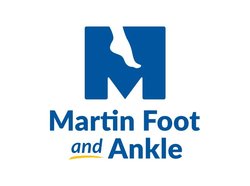This month, many people focus on roses, chocolates and the beating of our hearts. But we’re switching that up this February. We want you to focus on… your feet! Consider what they do for you on a daily basis. They take tons of impact daily from the full weight of our bodies, help us live active, productive lives and allow us to stroll hand-in-hand with the one we love. (Yes, we’re lovers at heart, too!) And, overall, our feet get very little respect. We think it’s time to give them a little L-O-V-E.
Lavish your feet with daily care
- Make a point to wash your feet with a washcloth daily. Don’t overlook cleaning between your toes. Use warm - not hot - water and a liquid soap containing skin softeners. Be sure to dry your feet completely, including between the toes. This daily cleansing lessens problems such as odor, bacteria, fungus and athlete's foot.
- Moisturize your feet after washing. During dry-skin winter months, you may want to moisturize several times a day. Basic lotions and creams normally work fine.
- Trim your toenails straight across and not too short. Don’t cut or dig at corners. This can cause ingrown toenails.
- Wear sunscreen on the tops of your feet. Apply a broad-spectrum sunscreen with an SPF of at least 30 to your feet when you're going barefoot or wearing open sandals. Hopefully NOT in February!
Organize your schedule to include exercise
Research proves the importance of physical activity to overall health. Exercise improves your cardiovascular health and can help your circulation, muscle tone, and mood.
- Physicians often recommend at least 150 minutes of moderate-intensity aerobic activity every week for all adults - including those 65 and older - who are generally fit and have no limiting health conditions. Resistance training on two or more days a week is also recommended.
- In addition to walking and resistance, exercises that improve flexibility also help keep your feet limber and may reduce your risk for injury.
- Lack of exercise results in a loss of muscle mass and strength, reduced endurance, and higher risk of diseases related to a sedentary lifestyle, including diabetes, heart disease, and cognitive decline.
Visible abnormalities should be dealt with promptly
Inspect your feet daily. Look for overly dry skin, cuts, sores, bruises, blisters, corns, calluses, scabs, and red spots. Make sure your toenails are clear and not discolored.
- You will need a well-lit place to catch even the smallest issues, since tiny problems can turn into major problems when left unattended.
- It’s not enough to just glance down at the tops of your feet. You need to inspect the tops, bottoms, and between the toes for both feet. Gently run your hands over the entire foot, checking for any bumps or temperature changes in all areas. A callus is more likely to be found on the bottom of a foot and corns can sometimes develop between toes. Either of those can break down over time and become an ulcer if you aren’t careful. Wounds that become ulcers can happen on all surfaces of the feet.
- If you are unable to see the bottoms of your feet, you need to enlist the help of a loved one or use a mirror.
- Do not trim, shave or use over-the-counter medications to dissolve corns or calluses. Contact Martin Foot and Ankle for help.
- If you find anything in your daily inspection that appears abnormal, schedule an appointment as soon as possible at your nearest Martin Foot and Ankle office.
Eat a healthy, nutritious diet
Nutrition makes a huge difference in your foot health. The right foods can encourage good circulation, build stronger bones and muscles, fight inflammation, and limit complications from problems like diabetes and obesity.
- You need ample amounts of the right vitamins, minerals, proteins, healthy fats, and sugars. Too much or not enough of any one nutrient can negatively impact your feet and lower limbs—and your overall body as well.
- Choose a diet that is filled with vegetables, fruits, lean meats, and dairy products. Fatty fish like salmon have important omega-3 compounds. Green vegetables are packed with great nutrients. Milk, yogurt, and cheese have calcium and vitamin D, which is important for bone health.
- Avoid foods that are high in salt, saturated fats, and sugars. Salty snacks, red meats, refined grains like white wheat and pasta, and sugary sweets are loaded with substances that can negatively impact your body’s functions.
Eating right and focusing on nutrition for feet can help you improve your overall health and discover new foods that are good for your body as a whole.
A unique Valentine’s Day gift!
Why not give the one you love… a new pair of shoes this Valentine’s Day! Comfortable shoes with arch support are a great choice for overall foot health. Properly fitted supportive shoes will align your feet to their natural position and evenly distribute your weight across your feet, reducing stress throughout your whole physical structure. Standing for a long time can make fatigue your feet. Wearing insoles that have a plastic shell at the bottom can help make shoes more comfortable. Please visit therightshoe.net to see the styles and options we have available.
If you encounter any type of foot or lower extremity problem, contact Martin Foot and Ankle for an appointment. You can reach our offices in Hanover, Lancaster, Lititz, York and West York by calling (717) 757-3537 or (844) 899-6961 or using our website contact form. Our team of podiatrists will carefully examine your feet and help you understand how to give your feet some L-O-V-E.
